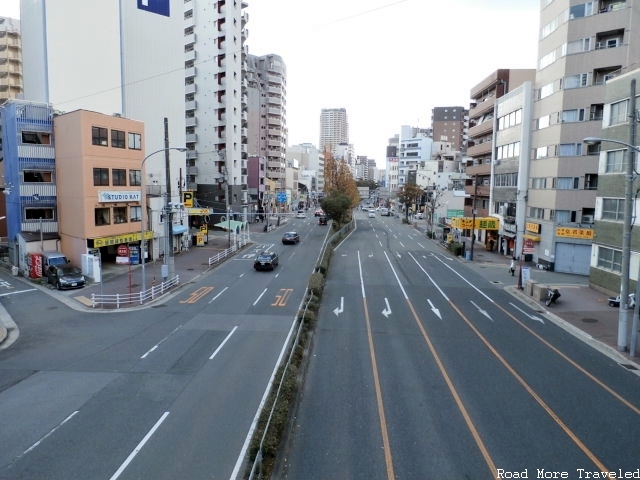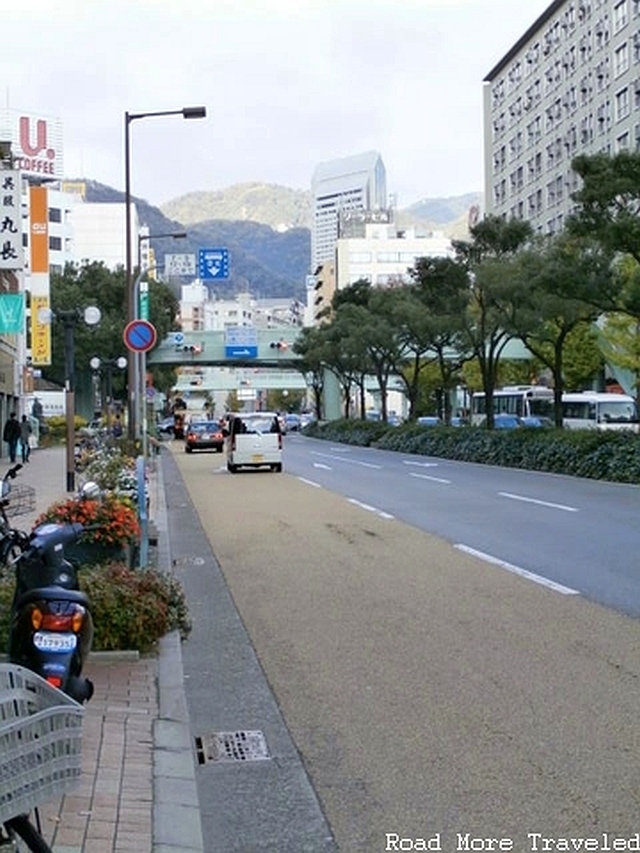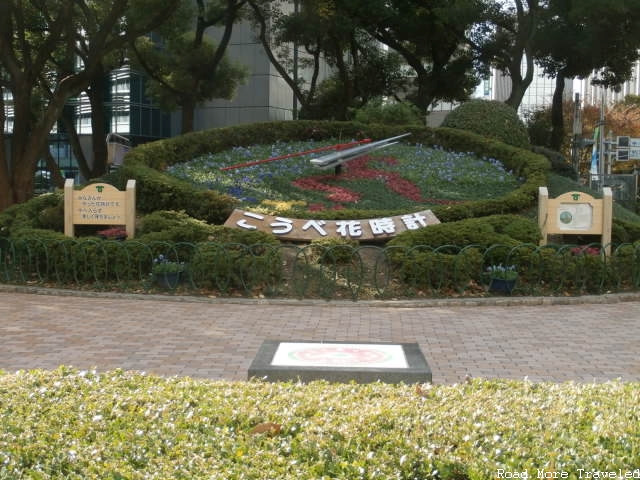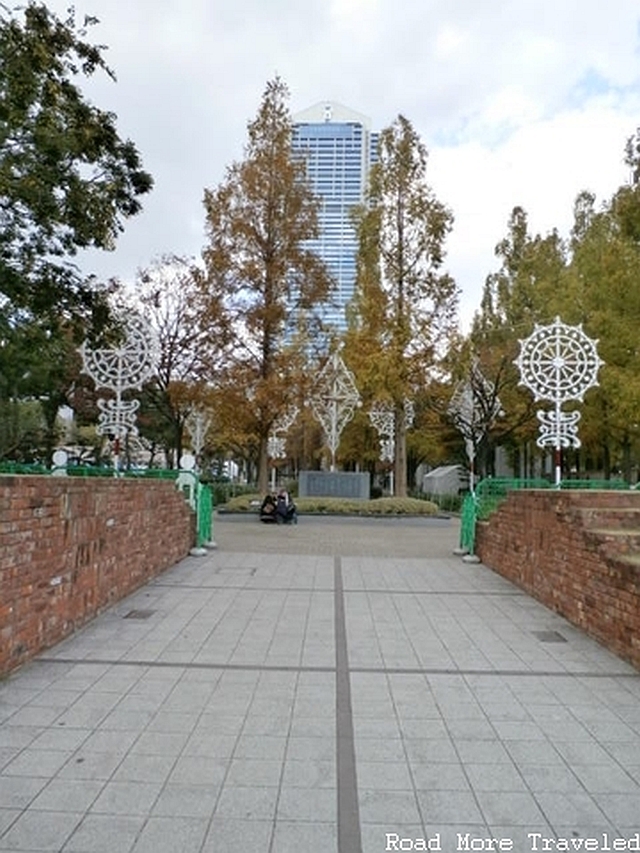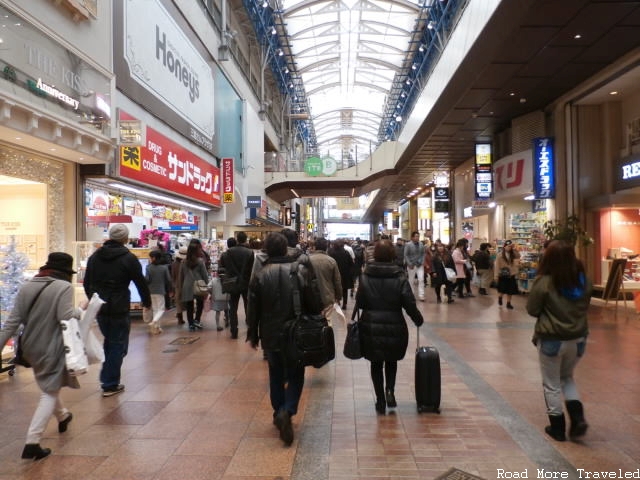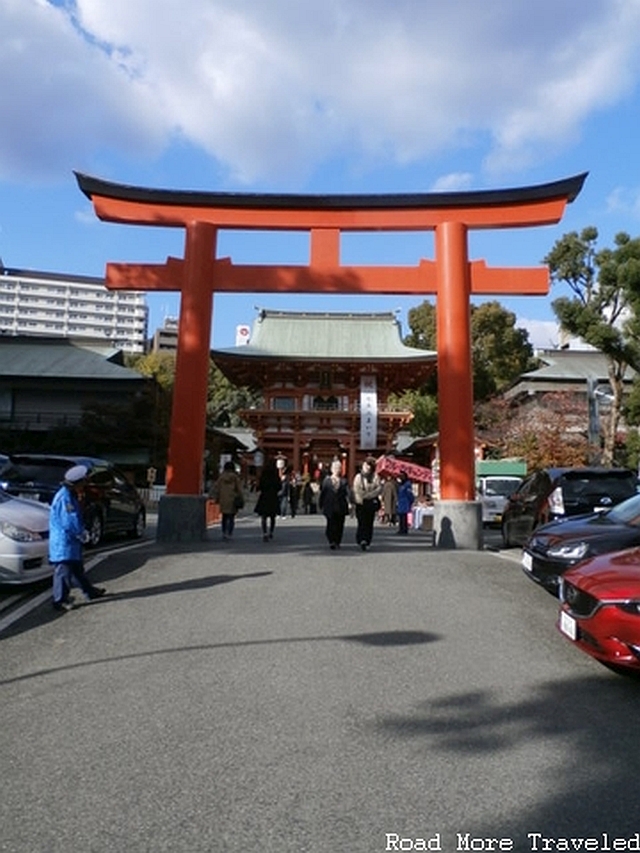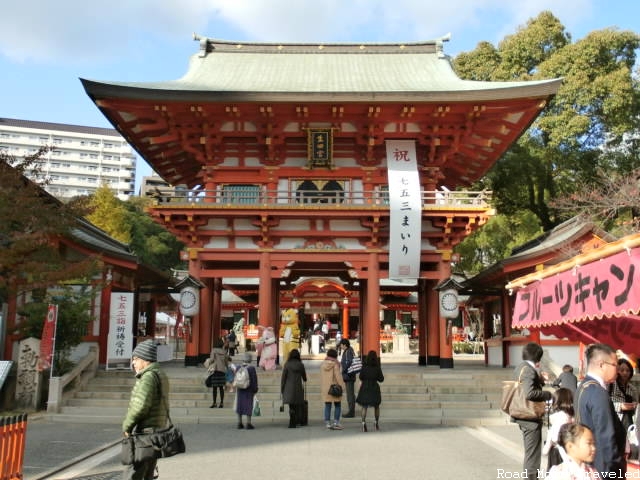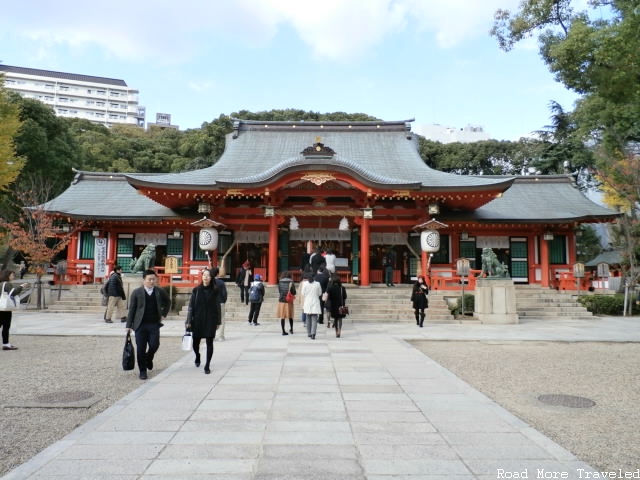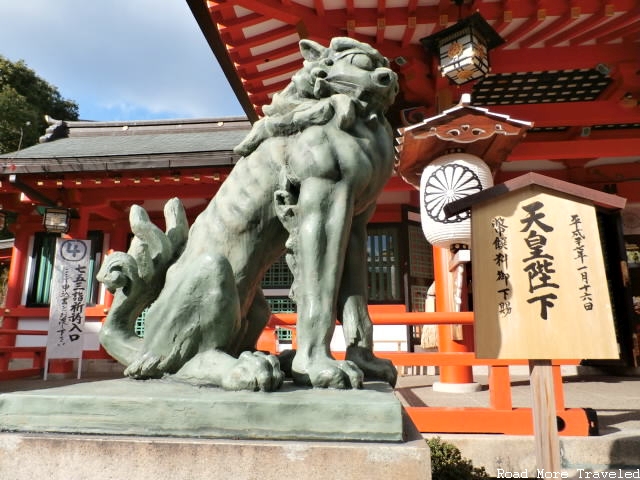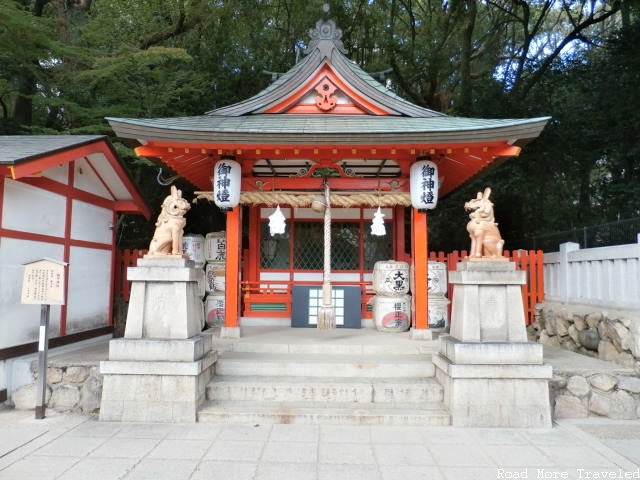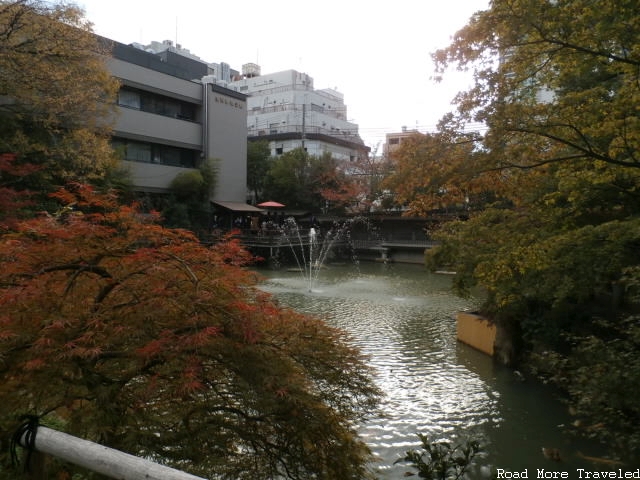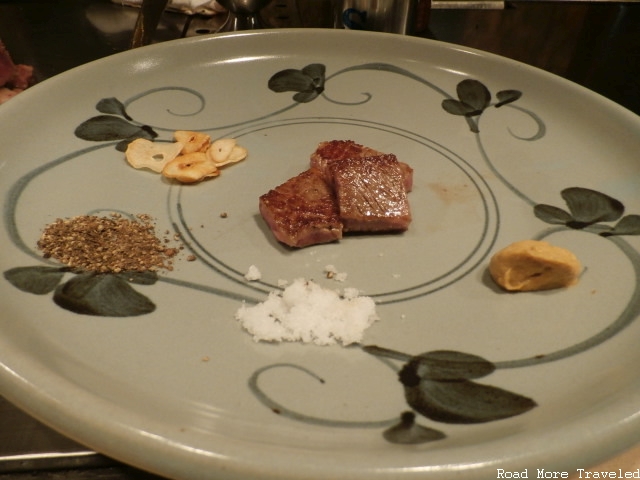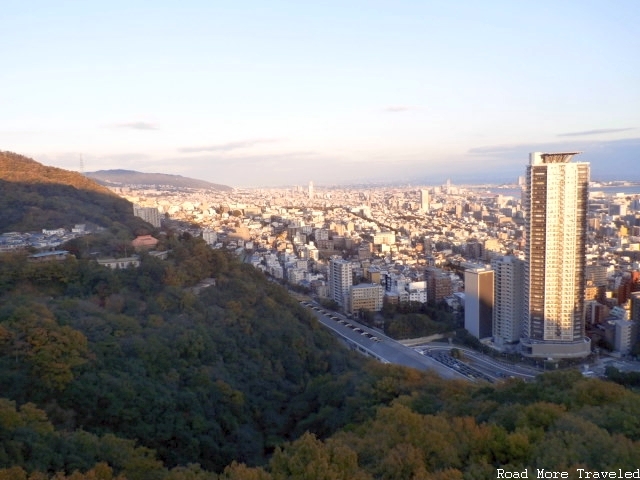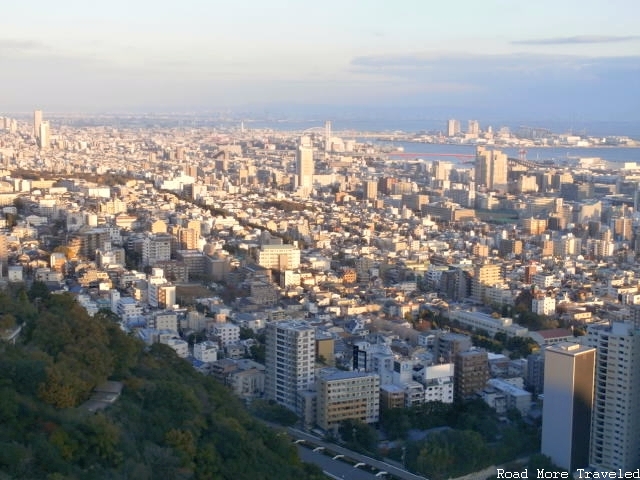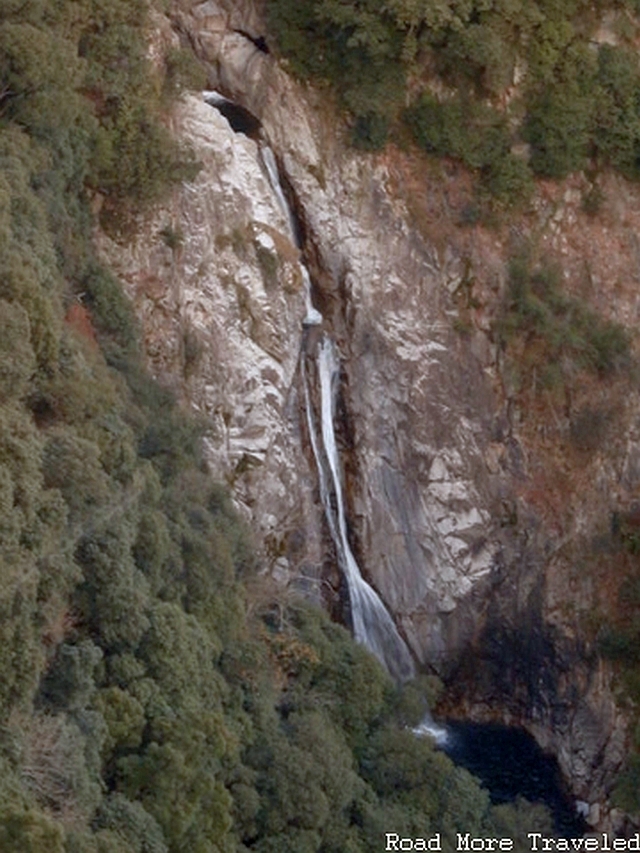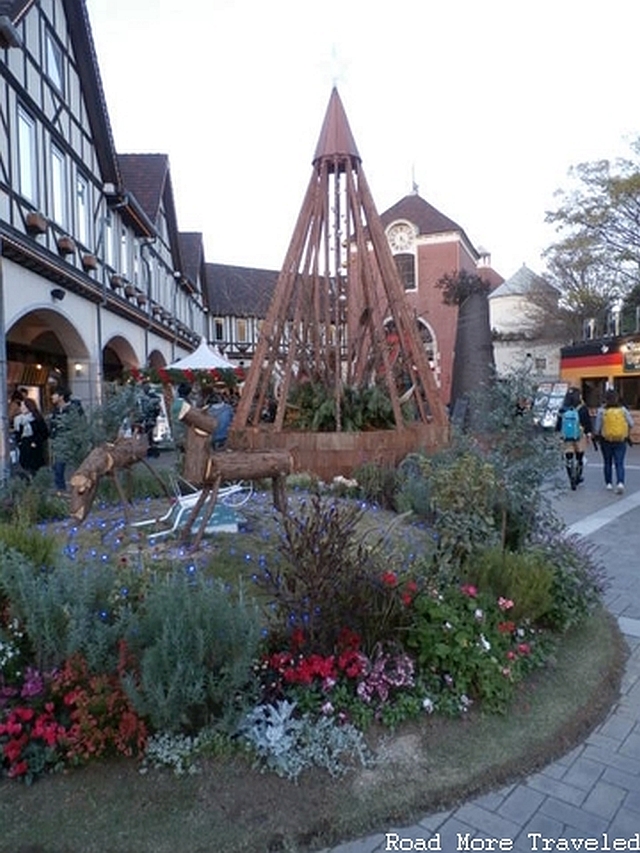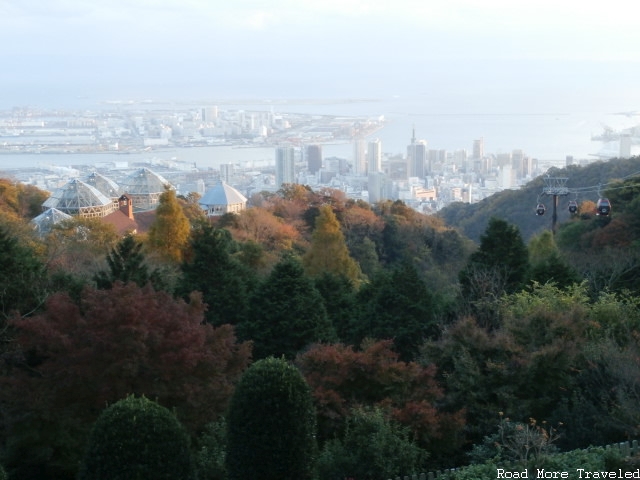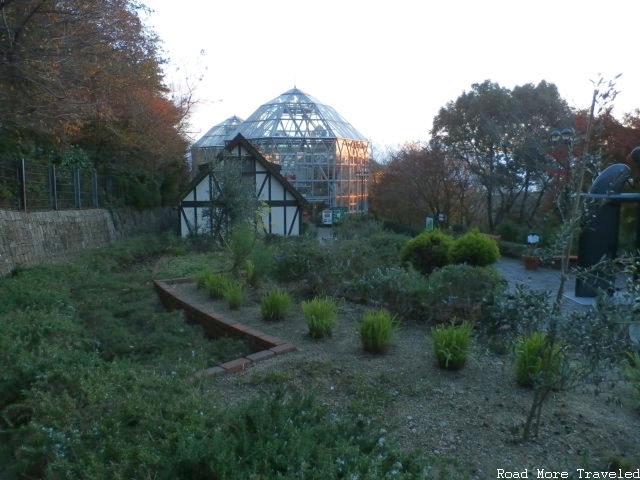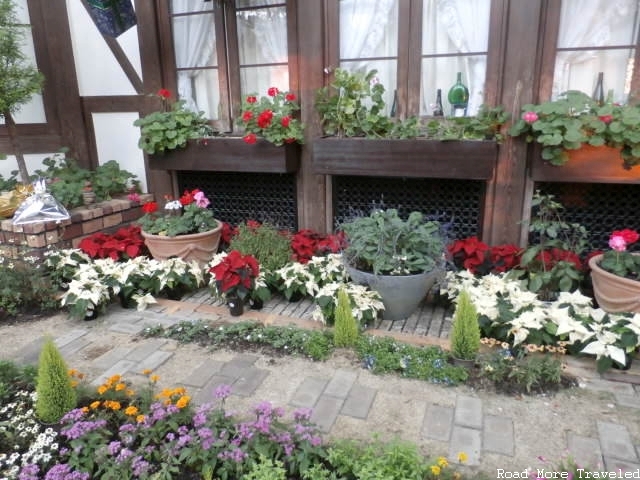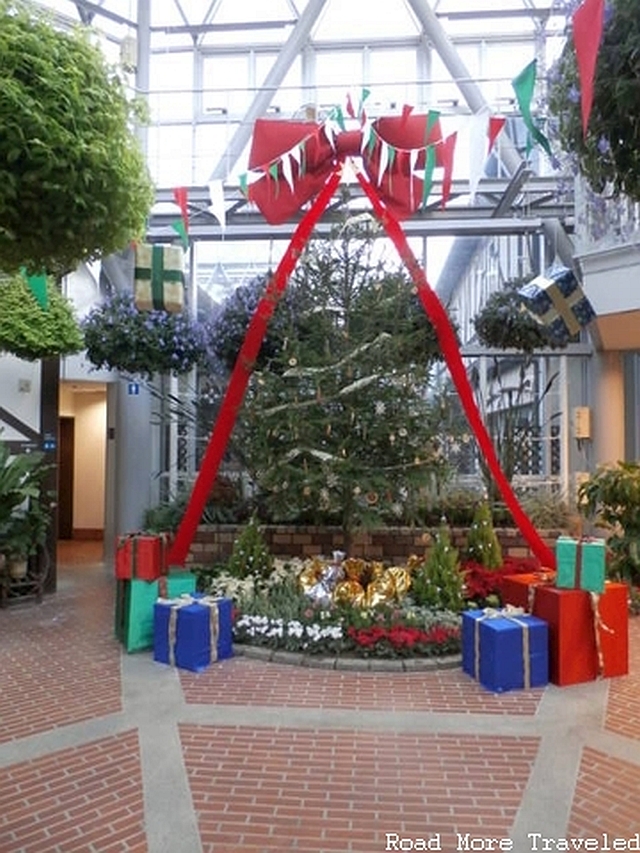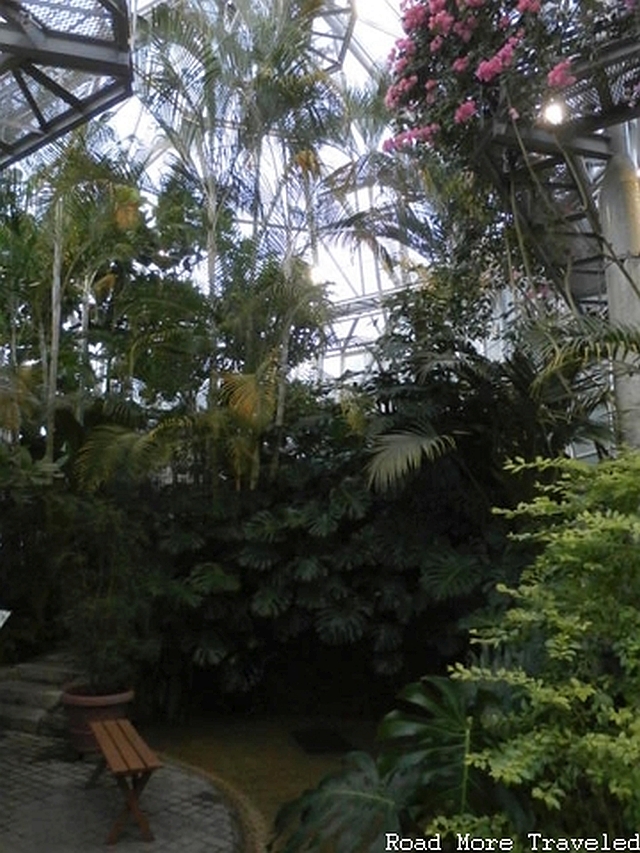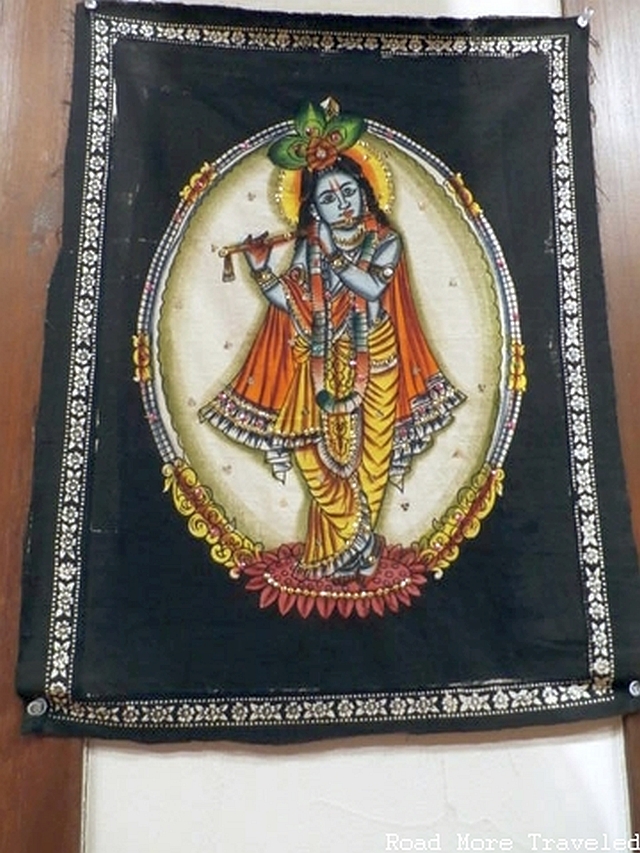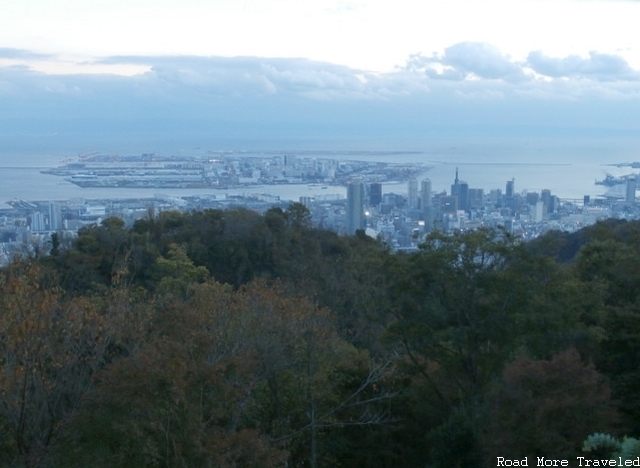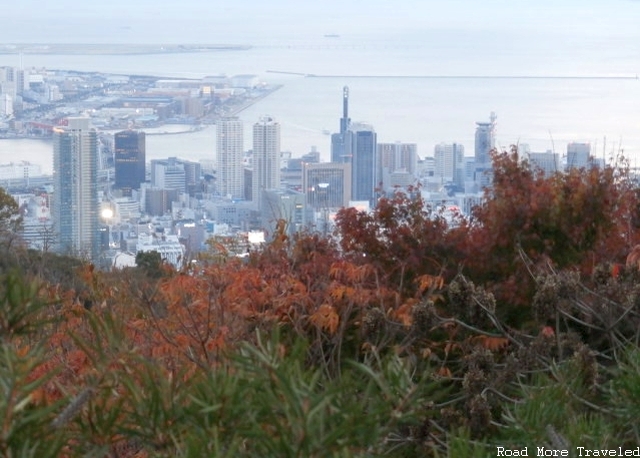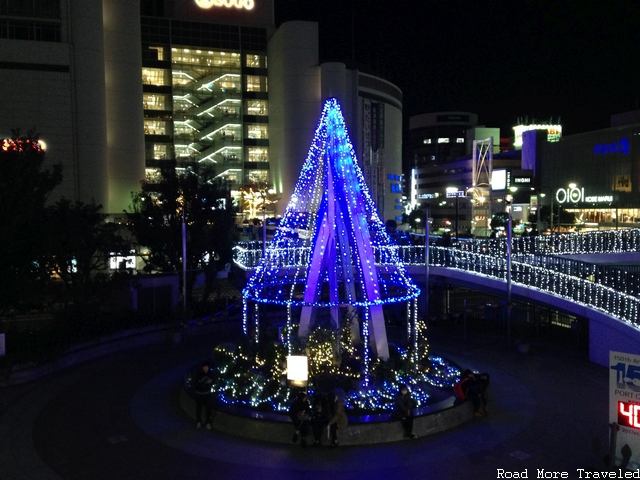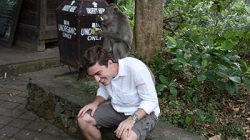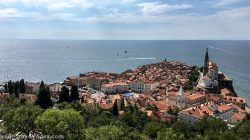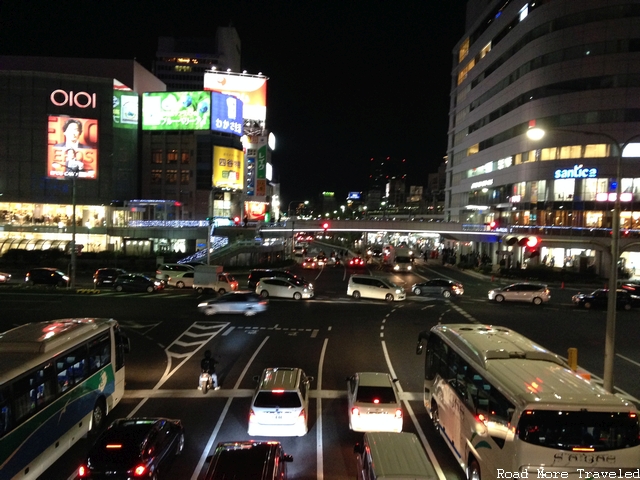
I won’t lie, the primary motivation for going to Kobe was to have a steak. But not just any steak – the world famous Kobe beef. Establishments peddling Kobe steak are a dime a dozen, especially in the Sannomiya shopping district. Since I’d come all this way, though, I wanted the best Kobe steak I could find. A little pre-research online suggested that Wakkoqu was the place to go in the city for Kobe beef. It seemed this would work out perfectly; there is a location in the Shin-Kobe Oriental Avenue Mall, which is connected to the Shin-Kobe Shinkansen station. With our train arriving around 12:30, we could have a slightly late lunch around 12:45 and then look around the city until it was time for our flight home.
Alas, things didn’t quite work out according to plan. We show up, and the chef tells us that they wouldn’t have a table available until 2:45. Urk. On the bright side, we’d be good and hungry by then. So we put our names down and set out to burn a couple of hours looking around the city. From Shin-Kobe, you can head downtown via the subway, which is a quick (<10 minute) ride. We had a lot of time to kill, though, so we decided to walk. Just walk out to the main road in front of the mall, turn right, and follow it all the way to the city center. At midday on a Saturday, this part of town was pretty quiet.
If you look back towards Shin-Kobe, you can see how the city basically backs right up to the mountains. The topography reminds me a little of Valparaiso, Chile. Unlike Valparaiso, the city’s development pretty much comes to an end once you reach the hills.
The walk downtown takes 20-30 minutes, and you’ll soon come across Higashiyuenchi Park. Here, you’ll find yet another landmark reminding you of Valparaiso – a Flower Clock, one that looks very similar to its famous cousin in Viña del Mar.
The park also had the beginnings of a winter art display, with several decorative snowflakes placed in the center of the park.
From here, we were hoping to visit the Kobe Pearl Museum, but unfortunately, it was closed on Saturday. We decided to just head back towards Shin-Kobe, but via a somewhat circuitous route to kill more time. We ended up in the bustling Sannomiya commercial district, which was already starting to get busy with weekend shoppers. In addition to large, multi-story shopping malls, Sannomiya is full of pedestrian-only streets that have been partially or fully covered to create a large public shopping area someone reminiscent of the Grand Bazaar in Istanbul. If you’re looking for trinkets to bring back from Japan, chances are you can find it here.
Incidentally, if you’re just looking for a place to get a steak to cross the item off your bucket list, Sannomiya is the place to go. Restaurants peddling Kobe beef to passing gringos are a dime a dozen on the main streets. Is it top quality beef? Probably not. Would I have been able to tell the difference between the cheap stuff here and what I ate? I don’t know, but I doubt it. You’ll have to decide the appropriate cost/quality trade-off.
But on the edge of the hustle and bustle of Sannomiya is a true hidden treasure, the Ikuta Shrine. Thought to be one of the oldest shrines in Japan, it was constructed by the Empress Jingu in the early 3rd century, and is revered as a guardian of good health and resurrection. It is the area around the shrine that gave Kobe its name. In the 9th century, the emperor assigned 40 familes to live in the area to maintain and protect the shrine. These protectors were known as Kanbe, which can be pronounced Kobe. If you’re a history buff, want to learn a little more about the ancient practice of Shinto, or just need a brief break from the city, don’t miss out on seeing the shrine, even just to walk through the grounds for a few minutes as we did.
Before you head back to civilization, don’t miss the duck pond on the western end of the shrine property. I didn’t see any ducks, but the pond is a beautiful spot to take in the fall foliage when in season, and provides an interesting contrast to the modern buildings surrounding the shrine.
From here, it takes only about 15 minutes to walk back to the Shin-Kobe Oriental Avenue mall, and we made it to Wakkoqu in time for our 2:45 reservation. I’ll have more details about our experience in a future post, but for now, I’ll leave you with this sneak peak of the finest Kobe beef grilled to perfection. It was the best steak I’ve ever head, bar none (no, this wasn’t all we got; this was just the first tasting).
Lunch took about an hour and 15 minutes, so we still had plenty of time to kill before our 9:00 flight back to Tokyo. Right next door to Oriental Avenue is the entrance to the Shin-Kobe Ropeway, an aerial tram that ascends to an observation deck in the Rokko Mountains. Normally the Ropeway shuts down at 5:00 in November, but it is open until 8:30 year-round on weekends. The Ropeway costs 1,400 yen (~$14) round-trip or 900 yen (~$9) one-way. This includes admission to the Nunobiki Herb Garden (more info on that later). If you don’t want to ride the tram, you can hike the entire way up to both the waterfall and the observation area. Though the distance isn’t very far, the first 1/2 of the trail is a steep uphill walk, though it flattens out a little after the Herb Garden.
Along the way to the top, you can get some decent views of both Kobe and the Nunobiki Waterfall, though glare from the glass windows can be an issue depending on time of day.
At the top of the tramway is a cheesy faux-Bavarian village type thing. Here, you can purchase some tourist trap items, mostly herbal products and remedies. You can get the same items for less money down in Sannomiya. If you need a pit stop or something to snack on, there are food stalls and restrooms here as well.
The real star of the top of the tramway is the view. I read somewhere that this is a popular spot for locals to take in city and sunset views. I can definitely see why.
Just below the observation area is the Nunobiki Herb Garden. We had to rush through the gardens, as we arrived maybe 20 minutes before closing time. The gardens close at 5, even on days the tramway runs until 8:30. As the name suggests, the gardens feature a variety of herbs and flowers, both native to Japan and normally found elsewhere, grown both outside and in the greenhouse structure seen below.
Interestingly, the greenhouse includes several plants and flowers native to much warmer climates. With it being less than a month before Christmas, a Christmas Tree had also been put up.
Also intriguing was a tapestry of a young Hindu god Krishna playing a flute. I definitely didn’t expect to see one here. I’m not sure what the significance was, aside from being in a room displaying ground spices from Southeast Asia and India.
Also on display here – more fantastic views of the Kobe skyline below.
We headed back to the top to enjoy some nighttime views of the skyline; unfortunately, I suck at taking night photos, so none of my pictures came out. With still way too much time remaining before our flight, we took the subway to Sannomiya, both to walk around a little and do some window shopping. In addition to the busy evening scene, the city had already put up its Christmas tree near Sannomiya Station.
By now, both Prita and I had enough, so we headed back inside to catch the Portliner to Kobe Airport.
Up next: our flight back to Tokyo on low-cost carrier Skymark Airlines.
Note: This post is part of my trip report series about our trip to Japan in November, 2015. Click here for the introductory post and trip report index.

